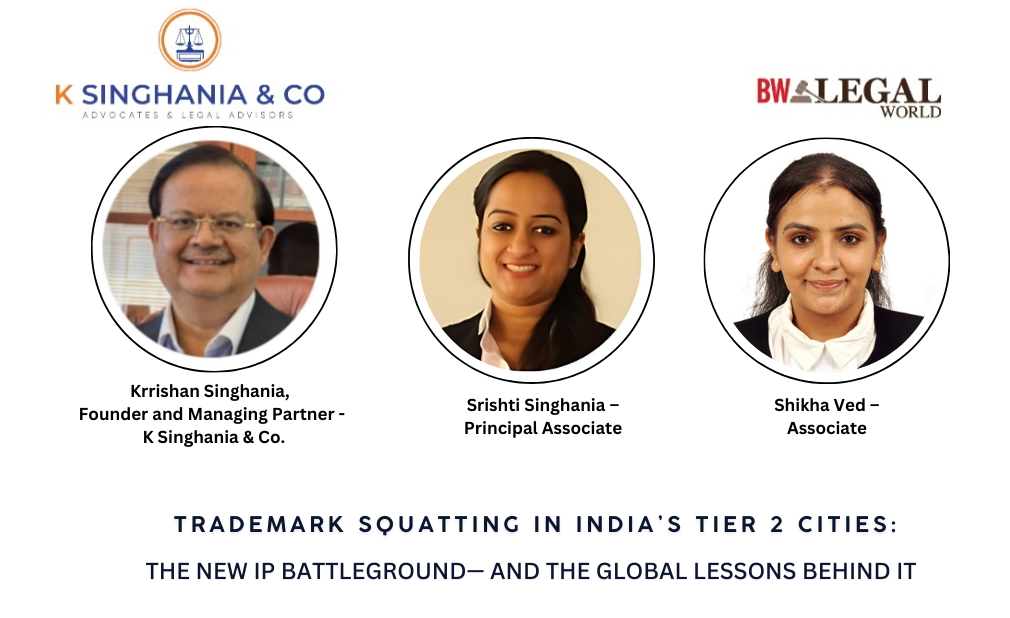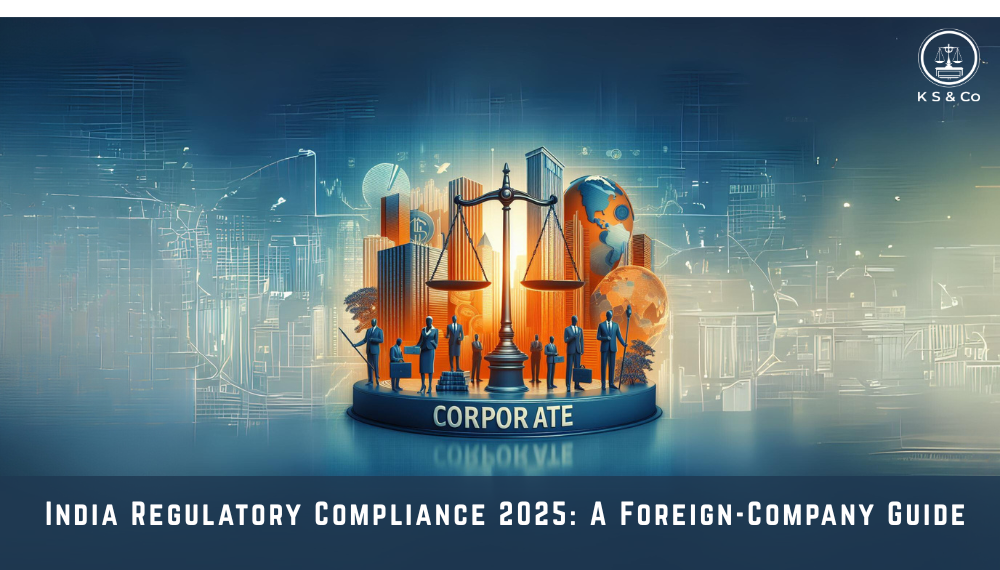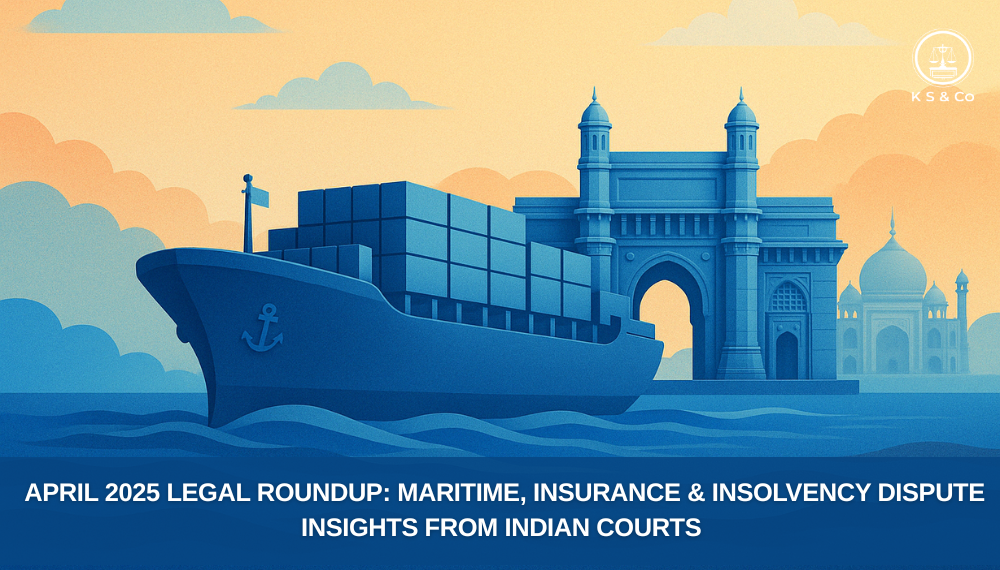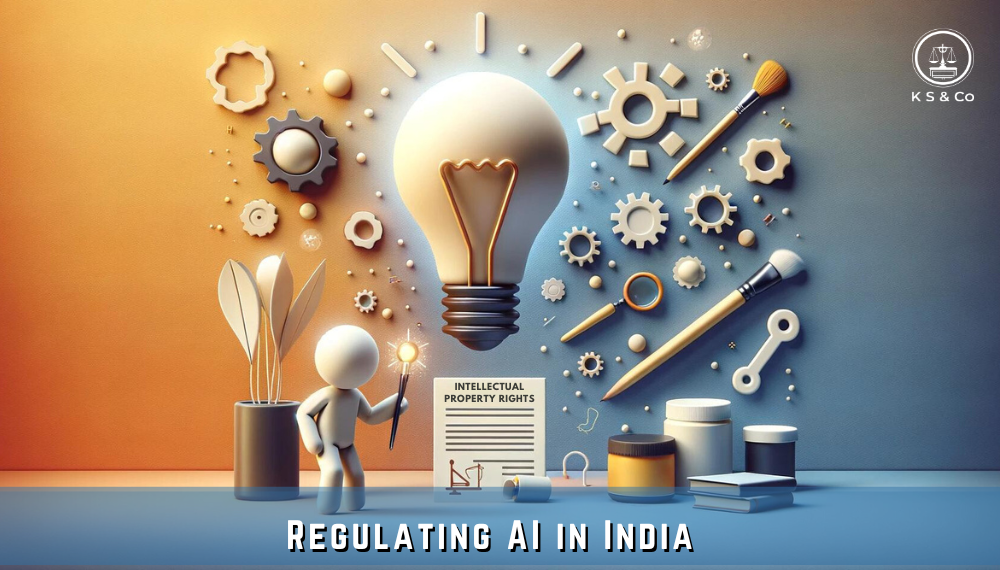One of the products of the Lindt and Sprüngli group (Plaintiff) is the “Lindt-Goldhase” (Lindt Gold Bunny). It is a sitting chocolate bunny wrapped in a golden foil packaging. They have been using the same shade of gold foil since 1994.
In 2018, the Plaintiff became aware of a competitor, Heilemann (Defendant), who also manufactures chocolates. The Defendant likewise marketed a sitting chocolate bunny in a gold-coloured foil.
According to a Lindt poll, 70% of respondents identify the golden colour used for the foil of the “Lindt-Goldhase” in association with chocolate bunnies to Lindt.
Initially, the Court, ruled in favour of Lindt. However, in 2020, the Munich court of appeal overturned the decision, stating that Lindt had not established a secondary meaning of the colour itself for chocolate bunnies.
This decision was appealed before the Supreme Court. The Supreme Court held that Lindt has non-registered trademark rights in Germany concerning the golden hue of “Lindt-Goldhase”.
The case has been remanded to the Munich Court of Appeals, which must now assess whether Lindt’s gold colour trademark was in fact infringed by the third party’s golden bunny.
K S & Co Comments:
The Supreme Court in the present case has upheld that secondary meaning does not mandate the employment of the abstract colour mark as a house colour for all or a subset of a company’s products. The judgment has greatly boosted the position of brand owners in Germany attempting to enforce rights in unregistered non-traditional trademarks.
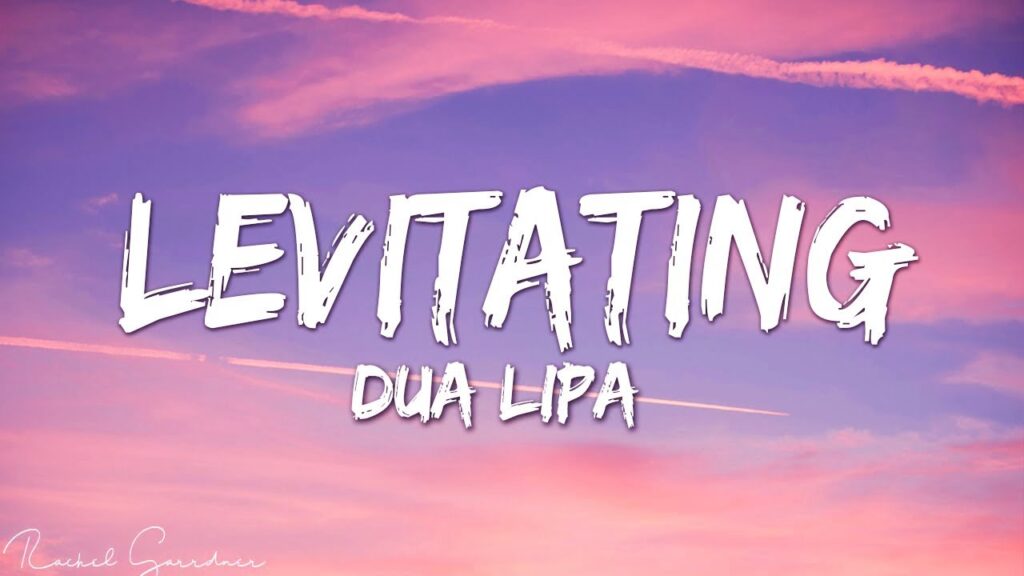
Two Copyright Infringement lawsuits on Singer Dua Lipa’s song “Levitating”
In a span of four days, two lawsuits have been filed against Dua Lipa’s hit song, Levitating. The single was released in 2020 and peaked at No. 2 on the Billboard Hot 100.
One of the lawsuits was filed by an American-based reggae band, Artikal Sound System (“Artikal”) on 1st March, 2022. They have alleged that the song is extremely similar to their own song “Live Your Life” and that levitate could not have been made independent of their song. Live your life was commercially released in 2017 and was streamed on several music services.
Mere three days later, songwriters L. Russell Brown and Sandy Linzer filed another suit of copyright infringement against Levitating. They claim that their song “Wiggle and Giggle All Night” shares “substantive similarities” with Dua Lipa’s song. The Plaintiffs using wit and puns, stated in their complaint, “Defendants have levitated away plaintiffs’ intellectual property”. Further, they alleged that the opening portion of both the songs shared a “signature melody”.
In the matter of Williams v. Gaye, the Court had held that music copyright infringement cases may be examined not only according to a song’s musical score, but also its groove and overall feeling. This 2015 judgment has proved to be a landmark judgment in the music copyright infringement field.
Whether the Court’s verdict on these two lawsuits will mark a landmark judgment is unclear. However, one thing is for sure that these proceedings will be closely watched by lawyers, musicologists, and music listeners.
K S & Co Comments:
Subtle similarities can be identified between “Levitating”, “Live Your Life” and “Wiggle and Giggle All Night”. However, it now rests upon the Courts to decide if Levitating infringes any of the copyrights.
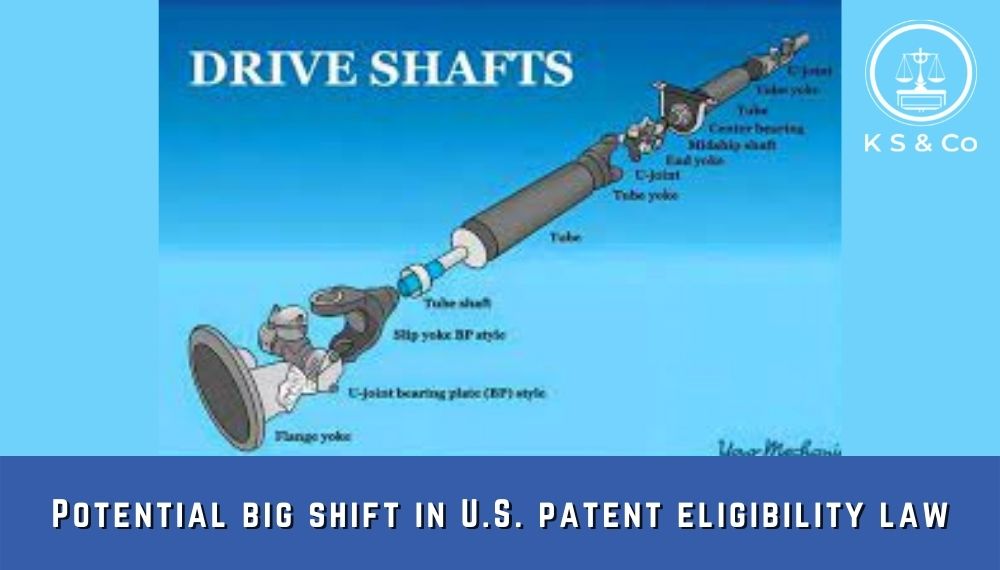
American Axle v. Neapco – Potential big shift in U.S. patent eligibility law
In 2015, American Axle and Manufacturing sued Neapco for infringement of a patent relating to a method for attenuating driveline vibrations in order to manufacture an automobile drive-shaft with reduced vibration. The Court applied the Mayo and Alice patent- eligibility test.
This test was devised by the Supreme Court wherein, even if the claimed invention fits into one of the four statutory categories of § 101, it must still pass the test. The test has two steps. First, one must determine whether the claim is directed to one of the judicial exceptions – laws of nature, natural phenomena, and abstract ideas. Second, the inventor must establish an “inventive concept” such that the claim amounts to significantly more than a claim on the ineligible concept itself.
The District Court found that independent claims 1 and 22 are directed to natural laws which is one of the exceptions and hence does not pass the Mayo and Alice test. On appeal, a divided Federal Circuit, upheld the District Court’s verdict. Finally, the full Federal Circuit denied the petition to rehear en banc by splitting 6-6.
In a dissenting the judgement, Judge Moore called the majority’s decision “fundamentally unfair” and also accused the majority of improperly merging questions of enablement and eligibility.
Due to the bitterly divided Federal Circuit, all agree that it is high time the Supreme Court weighs in and provides some clarity regarding patent eligibility under the US patent law. It is further contended that the Supreme Court must remove the several ambiguities that exist around the Mayo and Alice test.
K S & Co Comments:
The Supreme Courts seems to have taken interest in rectifying and clarifying the ambiguities concerning patent eligibility since in May 2021, the Supreme Court asked the solicitor general for consideration of American Axle’s certiorari petition, which is filed to reverse the Federal Circuit’s decision. Therefore, 2022 is speculated to bring a landmark judgment in the field of US patent law.
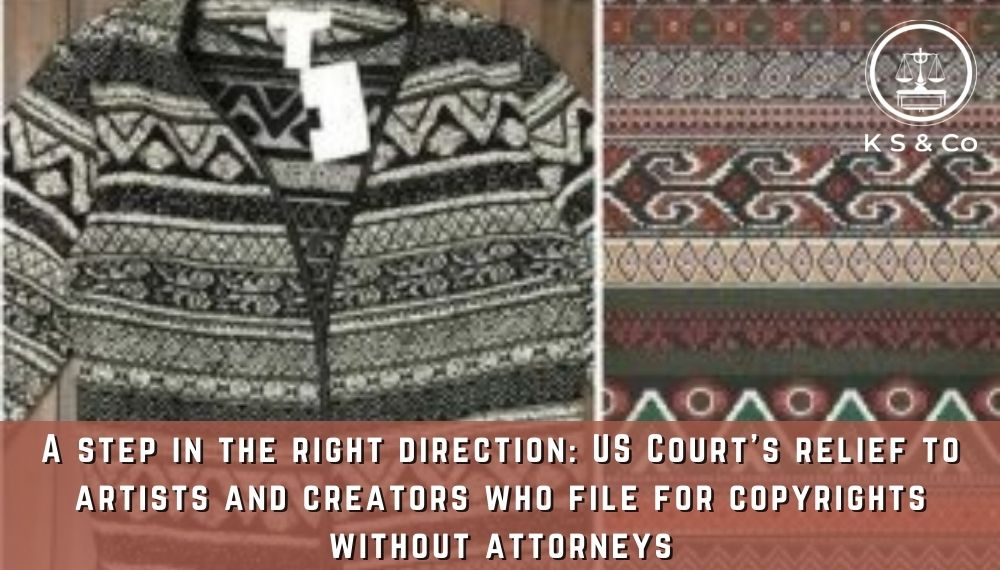
Unicolors, Inc. v. H&M Hennes & Mauritz, L.P.
In 2016, Unicolors, a Los Angeles-based fabric, and design company filed a suit against H&M, a fast fashion giant. The suit was filed for copyright infringement of geometric designs of Unicolors, used by H&M on several garments. Unicolors had filed 31 different designs under one registration which was contested by H&M as invalid. The District Court ruled in favour of Unicolors. H&M appealed to the Ninth Circuit.
The Ninth Circuit held that to register several works under a single copyright application, the registrant must first publish those works as a single, bundled collection. Since Unicolors failed to do that same, the Court overturned the District Court’s judgement. The Ninth Circuit further held that since the safe harbor provision of the Copyright Act only excuses good-faith mistakes of fact and not law, the copyright owned by Unicolors is invalid.
The Supreme Court disagreed with the verdict pronounced by Ninth Circuit. The Supreme Court clarified that the safe harbor provision does not differentiate between mistake of fact and mistake of law. Further, it was held that creators with no legal knowledge, have to grapple with legal complexities and should not be punished for inadvertent legal errors.
K S & Co Comments:
The Supreme Court in the present case has taken a liberal stance and pronounced a decision in favour of artists and creators who file for copyrights without attorneys. While this judgement gives hope to such artists, it should also be born in mind to proceed with caution when registering copyrights.
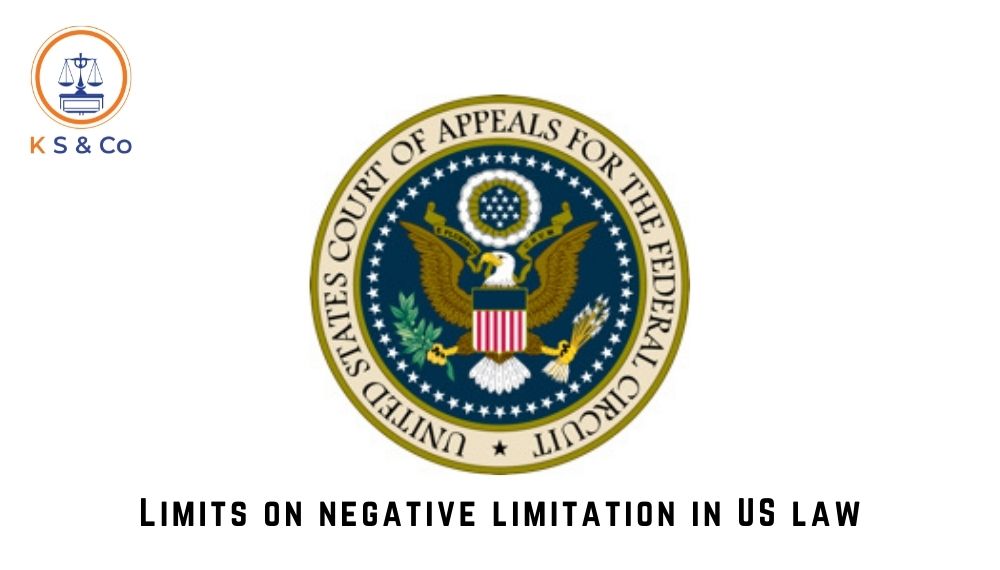
Novartis Pharmaceuticals Corp. v. Accord Healthcare, Inc., et al., No. 2021-1070 (Fed. Cir. (D. Del.) Jan. 3, 2022)
Facts:
Under the trade name Gilenya, the Plaintiff (i.e. Novartis Pharmaceuticals Corp.) sells a 0.5 mg daily dosage of fingolimod hydrochloride, a medicine used to treat relapse remitting multiple sclerosis (RRMS). The Plaintiff holds a patent that claims techniques for treating RRMS with fingolimod or a fingolimod salt, such as fingolimod hydrochloride, at a daily dosage of 0.5 mg without a loading dose immediately before it. The invention claims priority to a British patent application filed in 2006. The Defendant (i.e. Accord Healthcare Inc.) submitted an Abbreviated New Drug Application (ANDA) to get approval for a generic version of Gilenya. The Plaintiff subsequently filed a lawsuit, claiming that the Defendant’s ANDA violated the patent. The trial bench ruled in favour of the Plaintiff. An appeal was filed by the Defendant before the United States Court of Appeals for the Federal Circuit. The Defendant contended that the patent claims are invalid because the 2006 priority application lacks an adequate written description of the 0.5 mg daily dose limitation and the “no-loading-dose” negative limitation required by the claims.
Issue:
1.Whether the 2006 priority application lacks adequate written description?
2.Whether the 2006 priority application lacks negative limitation?
Decision:
The Federal Circuit rejected the first argument of the Defendant which stated: “that no one, including the inventors, knew that a 0.5 mg/day dose would be effective as of the priority date”. The Court observed that these disclosures were sufficient to show that the inventors possessed a 0.5 mg daily dosage at the time of the invention. Another reason given by the Court is that an experiment described in the application provided evidence “that the inventors knew that a 60% lower dose would be effective”. The Court also rejected the second argument. It was reiterated that there is no new and heightened standard for negative claim limitation. The Court clarified original disclosure which conveys to a person of ordinary skill that the inventor was in possession of the claimed invention.
K S & Co Comments:
In the case at hand, the Federal Court was in full conformity with the reasoning given by the District Court. Both the Courts in the present case have correctly and carefully analyzed the specification from the peculiar perspective of a person of ordinary skill in the art.
INDIAN CASE LAWS
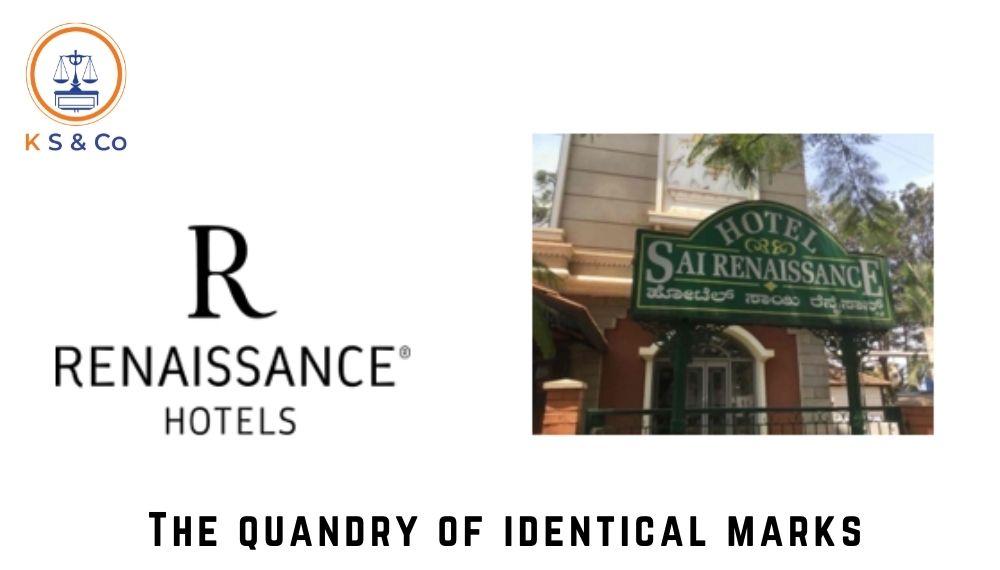
Renaissance Hotel Holdings Inc. v. B. Vijay Sai and Ors. – (2022 SCC OnLine SC 61)
Facts:
The appellant (i.e. Renaisance Hotel Holdings Inc.) is a company incorporated under the laws of the State of Delaware, USA, that is the holder of the trademark ‘RENAISSANCE’. The respondents (i.e. Vijay Sai & Ors.) were allegedly running a hotel by the name ‘SAI RENAISSANCE’ in Bangalore and Puttaparthi and the style, signage, and word had also been allegedly copied. The appellant filed a suit against the Respondents for a permanent injunction against the use of the allegedly infringing trademark ‘SAI RENAISSANCE’.
The respondents in their defence stated that the term ‘RENAISSANCE’ was a generic word used widely, it was not well known, and neither did the use of it by the appellant gathered any reputation.
The Trial Court held the respondents’ mark was infringing the trademark of the appellant, and granted an injunction against its use by the respondents.
On appeal before the High Court by the respondents, the High Court observed that the Appellant provided no evidence of a trans-border reputation for its mark, of any damage caused to its reputation or distinction of the mark, or of any unfair advantage taken by the Respondents on account of which there was no infringement.
Issues:
Whether the decision of the High Court in holding there to be no infringement of the appellant’s trademark was valid?
Decision:
The Apex Court concluded that the High Court had erred in its interpretation of the test laid down under S.29(4) of the Act, as it had not taken into account the other applicable provisions of S.29(4), as well as other provisions which covered the circumstances of the case herein. The Apex Court also reiterated that a section could not be read in isolation. The Supreme Court opined that the High Court erred by focusing on S. 29(4)(c) alone, and did not take into consideration the other sub-sections of the provision that were applicable as well. Therefore, the Apex Court overturned the order of the High Court and upheld the order delivered by the Trial Court as well-reasoned.
K S & Co. Comments:
The findings of the apex court have come in line with the catena of judgements passed erstwhile on the same subject of trademark infringement. The judgement is welcome as it encourages the applicant to file a suit for trademark infringement.
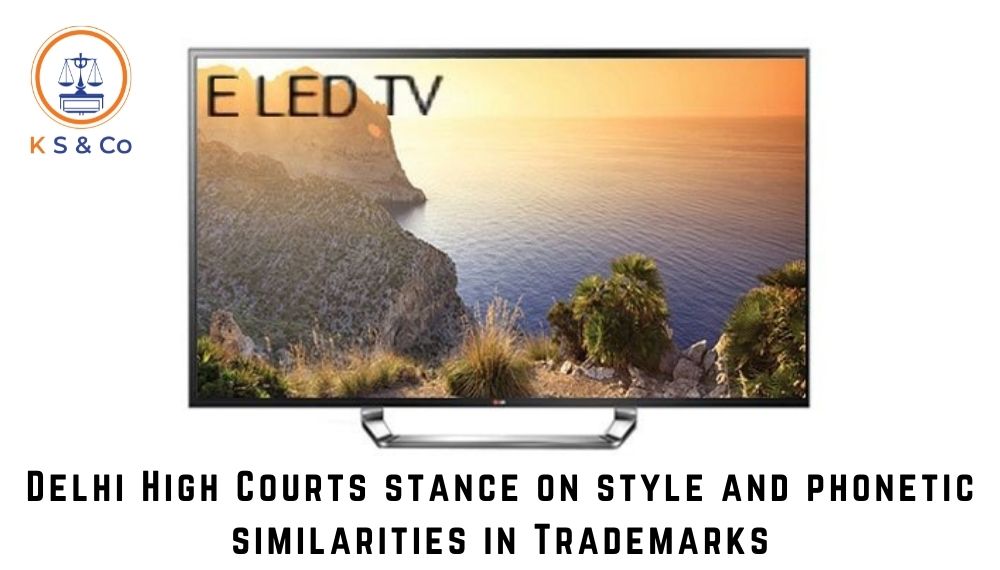
Airtec Electrovision Pvt. Ltd v. Sunil Kumar Saluja – Delhi High Court, Case No. 40968 of 2021
Facts:
The plaintiff (i.e. Airtec Electrovision Pvt. Ltd) was engaged in the business of manufacturing, promotion, and distribution of E-led Television sets across India under the name and style “EIRTEC”. The plaintiff alleged that the defendant’s trademark “AIRNET” in respect of television sets was deceptively similar.
The defendant (i.e. Sunil Kumar Saluja) submitted that the term ‘Air’ is a business name in respect of the item through which telecast is done and since they were engaged in the business of smart TV, the term ‘net’ was in the context of networking. Thus, they have coined the term ‘AIRNET’ by mixing the two words ‘air’ and ‘net’.
Issues:
Whether the plaintiff’s application under Order 39 Rule 1 & 2 CPC to seek an interim injunction against the defendant restraining him from using the trademark named “AIRNET” be granted?
Decision:
The Delhi High Court dismissed the application as without merits. The court held that the word ‘air’ is descriptive in nature which is being used in the trade of electronic goods as a part of their trademarks such as Airtel and Aircel. Therefore, the plaintiff cannot claim a monopoly over words that are descriptive in nature. Further, the court held that the consumers of E-Led Televisions are literate and can distinguish between ‘AIRNET’ and ‘EIRTEC’. As observed, the words had not acquired a secondary meaning concerning the product of the plaintiff and therefore plaintiff cannot claim monopoly over these words.
K S & Co Comments:
The judgement given by the court is innovative as it brings about the angle of the concept of trademark infringement through phonetics as contended by the parties. However, since the words had not acquired a secondary meaning, it was imperative to restrain the plaintiff from claiming to monopolize 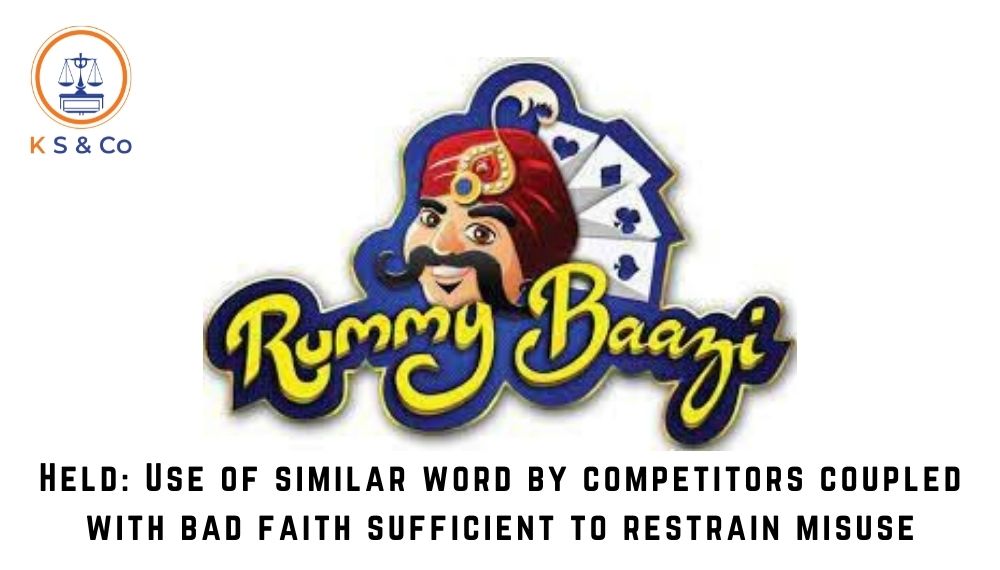 words.
words.
Moonshine Technology (P) Ltd. v. Tictok Skill Games (P) Ltd.- (2022 SCC OnLine Del 296)
Facts:
The plaintiff (i.e. Moonshine Technology (P) Ltd.) is a part of the “Baazi Group”, a famous name in the gaming industry in India that offers several registered variations of games like “PokerBaazi”, “RummyBaazi” etc. under its registered trademark ‘Baazi.’ The defendant (i.e. Tictok Skill Games (P) Ltd.) who is another gaming company was using the word ‘Baazi’ as a part of the poker game’s title as “WinZoBaazi”.
The plaintiff claimed that the use of the word “Baazi” was infringing on the exclusive right owned by the plaintiff and as the services offered by both the companies were similar, the usage of the term would create confusion among the consumers.
The defendant stated that the term “Baazi” was a descriptive word in the term “WinZoBaazi” as it contended that the term “Baazi” is a generic term as it means a game in Urdu.
Issues:
Whether defendants used the plaintiff’s registered trademark “Baazi” dishonestly and with an unfair advantage of reputation?
Decision:
The Delhi High Court stated that the plaintiff had the exclusive right to use the registered trademark of “Baazi” and its variations. The court also stated that the defendants’ failure to establish that the usage of the word “Baazi” as honest and as a descriptive word, made the statutory defences under Sections 30 and 35 of the Act inapplicable.
The court stated that the plaintiff’s thriving business will suffer ‘irreparable loss and injury’ because of the defendant’s app of “WinZo Baazi” which could confuse the players, and would impact the plaintiff’s reputation.
K S & Co Comments:
In trademark cases, the court generally grants an injunction on account of the irreparable loss and injury that the plaintiff will likely suffer when the plaintiff shows a likelihood of success on the merits of the case. The aforementioned case is one such case and since the Baazi group is a known name the defendant could not rebut the presumption of ‘irreparable loss and injury’, thereby constituting it to be a trademark infringement case.
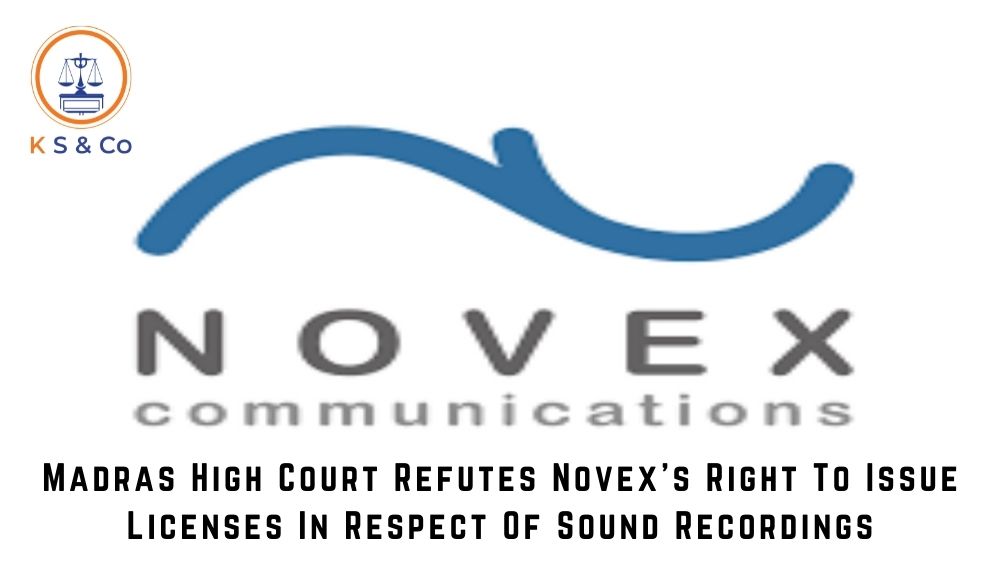
Facts:
In their capacity as an assignee, the Plaintiff (i.e. Novex Communication Pvt. Ltd.) was in the business of protecting copyrights that were present in sound recordings. Based on the basis of assignment agreements, the Plaintiff claimed exclusive copyright to the extent of exploitation of the on-ground performance rights of various sound recordings. The Defendant (i.e. DXC Technology Pvt. Ltd.) in both suits contended that the Plaintiff was neither a copyright society nor a member of a copyright society, and thus was not entitled to any licence fees.
The Plaintiff contended that an owner of a sound recording is not covered by Section 33 of the Copyright Act of 1957, which addresses the role of a copyright society. Furthermore, the Plaintiff contended that because a copyright owner’s right is recognised under Section 30 of the Act, registration under Section 33(3) is unnecessary.
The Defendants contended that the Copyright (Amendment) Act of 2012 was intended to prevent the exploitation of copyright in sound recordings. Furthermore, the Defendants emphasised that the spirit of the Act will be defeated if the Plaintiff is not registered as a copyright society under Section 33(3) of the Act.
Issues:
Whether it is mandatory for a copyright society to register under section 33(3) of the Copyright Act, 1957?
Decision:
The Court rejected the Defendants’ reliance on Section 30 and ruled that Section 30 does not differentiate between persons and corporations that provide permits, and that such differentiation could be found in Section 33(3). Licenses could be issued only through a copyright society that has been duly registered under section 33(3). The Plaintiff’s requested reliefs were therefore refused by the Court since they were found to be statutorily forbidden from giving licences.
K S & Co Comments:
Currently, various organisations are engaged in the business of issuing music licences. Entities involved in the digital dissemination of music are also included. According to the Madras High Court’s judgment, all such companies are not permitted to perform license-issuing operations other than through a registered copyright society. Thus, these entities must register their societies to facilitate the business of issuing music licenses.
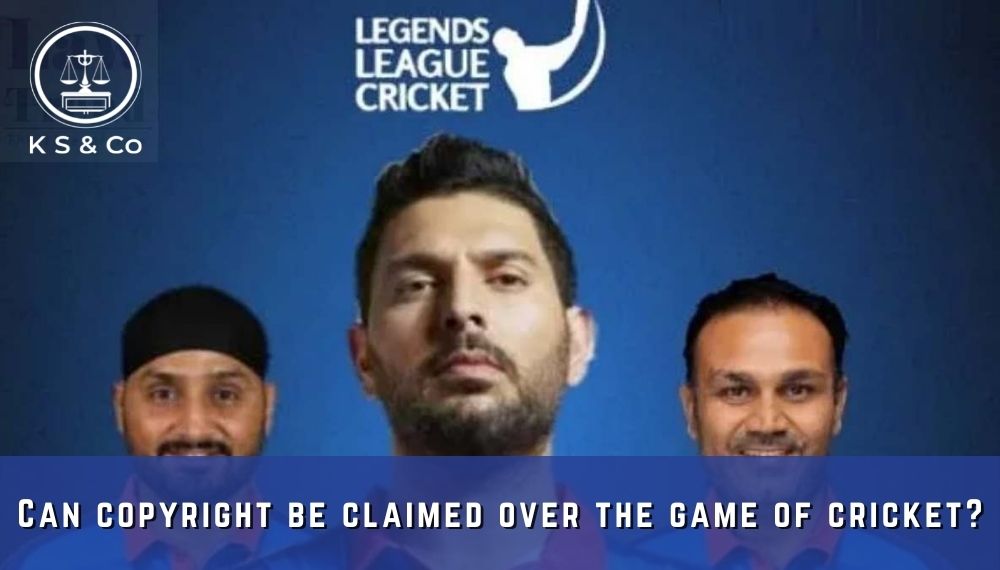
Samir Kasal v. Prashant Mehta & Ors.- (2022 SCC OnLine Del 184)
Facts:
The Plaintiff (i.e. Samir Kasal) formulated the “Legends Premier League” where legendary and famous retired players would come together and play cricket. The details of the same were confidentially provided to the Defendant. However, the Defendant organized the “Legends Premier League” without the Plaintiff’s consent.
The Plaintiff filed a suit on the ground of breach of confidentiality and further claimed that the idea formulated amounted to “work” under section 2(y) of the Copyright Act, 1957. The Defendant’s claimed that the idea was neither original nor novel as there were similar elements in prior cricket games that existed in the public domain. Further, the defendants (i.e. Prashant Mehta & Ors.) also contended that the idea could not amount to “work” as it was not complete in the first place.
Issues:
Whether the Plaintiff’s idea amounted to “work”?
Decision:
The court held that the balance of convenience was in the favour of the defendant’s as common elements of the game existed in the public domain, thereby rendering the idea conceptualised as “unoriginal”. The elements of a quasi-contract had not been fulfilled and lastly, the obligation of confidentiality could not continue indefinitely thereby dismissing the Plaintiff’s claims concerning breach of confidentiality.
K S & Co Comments:
The objective of copyright has always been to enhance authorship as well as public awareness. By rejecting the applications, the Delhi High Court attempted to protect the aim of the Copyright Act, 1957, thereby incentivizing authors to register their work to get protection.


